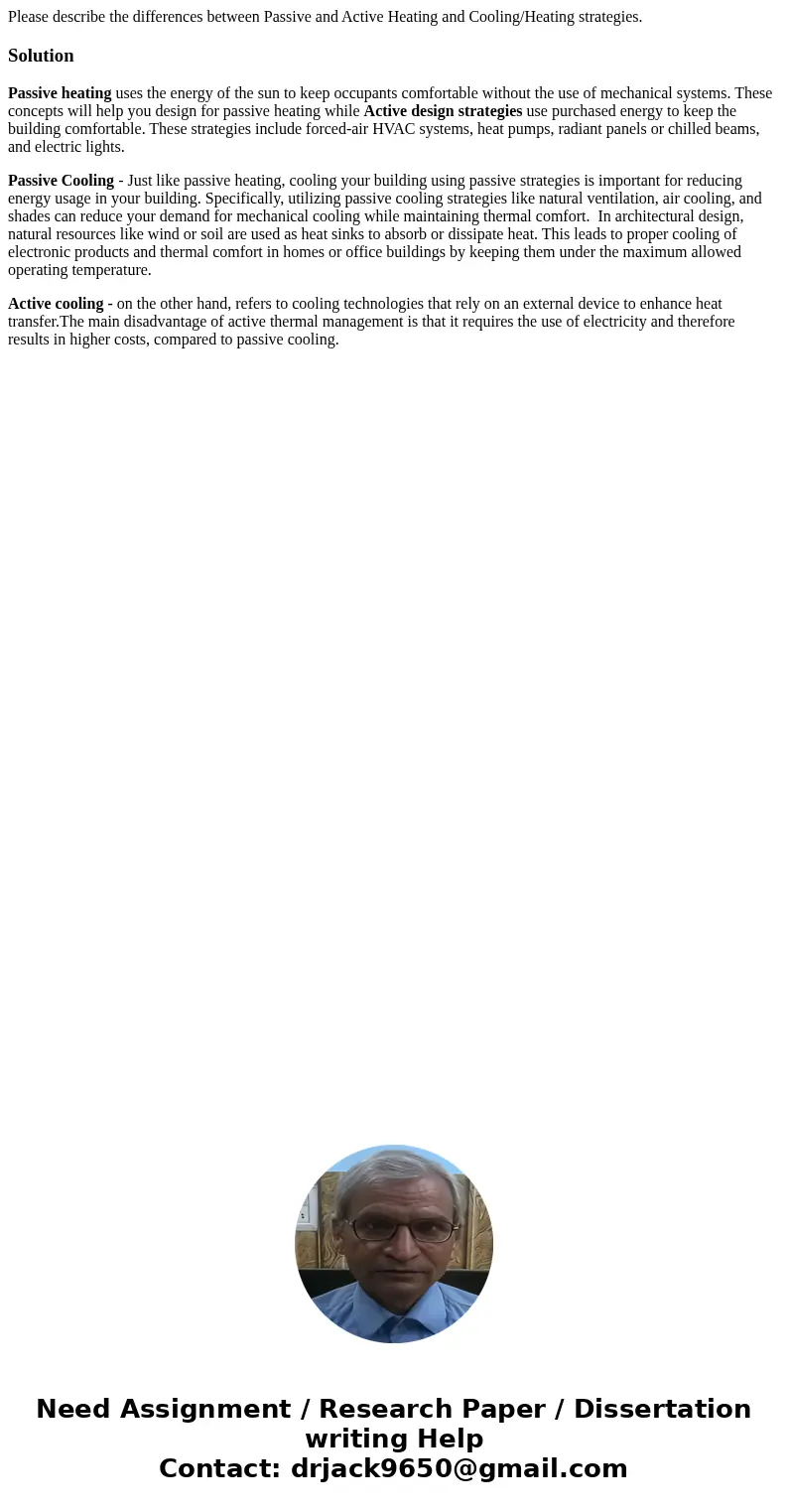Please describe the differences between Passive and Active H
Solution
Passive heating uses the energy of the sun to keep occupants comfortable without the use of mechanical systems. These concepts will help you design for passive heating while Active design strategies use purchased energy to keep the building comfortable. These strategies include forced-air HVAC systems, heat pumps, radiant panels or chilled beams, and electric lights.
Passive Cooling - Just like passive heating, cooling your building using passive strategies is important for reducing energy usage in your building. Specifically, utilizing passive cooling strategies like natural ventilation, air cooling, and shades can reduce your demand for mechanical cooling while maintaining thermal comfort. In architectural design, natural resources like wind or soil are used as heat sinks to absorb or dissipate heat. This leads to proper cooling of electronic products and thermal comfort in homes or office buildings by keeping them under the maximum allowed operating temperature.
Active cooling - on the other hand, refers to cooling technologies that rely on an external device to enhance heat transfer.The main disadvantage of active thermal management is that it requires the use of electricity and therefore results in higher costs, compared to passive cooling.

 Homework Sourse
Homework Sourse